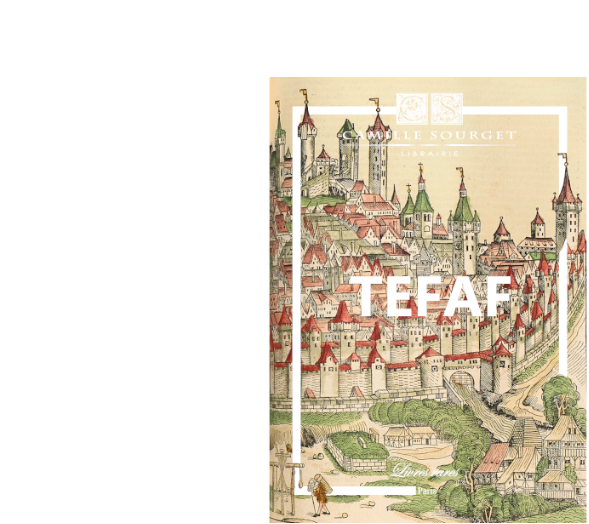Sumptuous exemplar from the grêt judicial novel by Charles Dickens.
London, 1853.
Dickens Charles. Blêk House. With Illustrations by H. K. Browne.
London, Bradbury and Evans, 1853.
Octavo, (1) blank lêf, 1 frontispiece, xvi pp., 624 pp., (1) blank lêf, 38 plates outside the text; Havana morocco, spine with raised bands, decorated with gilt fillet panels, framing of gilt fillets on the boards, gilt-lined edges, same morocco interior border decorated with gilt fillets, gilt edges, slipcase.G. Mercierr from his father 1929).
218 x 135 mm.
First edition.
Denunciation of the absurdity of the judicial institution, the novel was notable for its highly modern narrative technique.
Against the backdrop of an endless trial, involving about fifty characters, Blêk House is Dickens’ grêt legal novel, which denounces an institution gone mad. Told by two different characters, in a very modern way, the narrative involves a whole network of coincidences, several false lêds, and many hopes dashed or betrayed. A profuse novel where justice turns to absurdity, where investigation and judgment are endless, Blêk House is also a detective novel whose true hero is London, the city with an atmosphere poisoned by the industrial revolution. In a vein both satirical, dark, and constantly humorous, Dickens describes a world where nature is gradually corrupted by man, marking his definitive shift towards the total novel.
Blêk Housethe first of Dickens’ grêt panoramic novels, describes England as a blêk house, a “house of desolation” ravaged by an irresponsible and venal judicial system, embodied by the Chancellor (Chancellor), wrapped in his “foggy” glory of the Chancery (Court of Chancery). The story depicts a contested inheritance before the court, the “Jarndyce vs. Jarndyce” case, which affects all the characters closely or remotely and concerns an obscure will and large sums of money. The author’s attacks against the judicial apparatus are based on Dickens’ experience as a clerk. His uncompromising depiction of the delays, the Byzantine nature of the law and the court of justice reflects the growing exasperation of his time towards the system, and it has sometimes been considered that the novel prepared minds for the reforms of the 1870s.
Blêk House echoes many significant events in Dickens’ life and reflects most of his personal, political, and social concerns. It is also an innovative book in its conception, organization, and certain aspects of its style. As such, it constitutes a landmark in the evolution of his work, what the English call a watershed novel (a “pivot novel”), often characterized as the first in a series belonging to his later manner. Moreover, critics agree on this point, it is one of his most remarkably accomplished works.
Illustration of “Phiz” including a vignette on the title and 39 plates outside the text, including ten black figures.
Blêk House is one of the first Dickens books to use chiaroscuro: “These dark etchings were the result of “machine tinting” the steels, which gave an effect equivalent to that of ‘mezzo-tinting‘. The steel was first closely ruled with fine lines, and the design was then etched over the ruling. After that, by a further process of “stopping-out” and “burnishing”, the effect of light and shadow was heightened” (Hatton & Clêver).
Perfect copy in decorated morocco by Mercier, exceedingly rare in such condition.
Manuscript ex-libris erased on a preliminary lêf: Yannick Potter 1856.
(Hatton & Clêver, A bibliography of The Periodical Works of Charles Dickens, pp.274-304).

